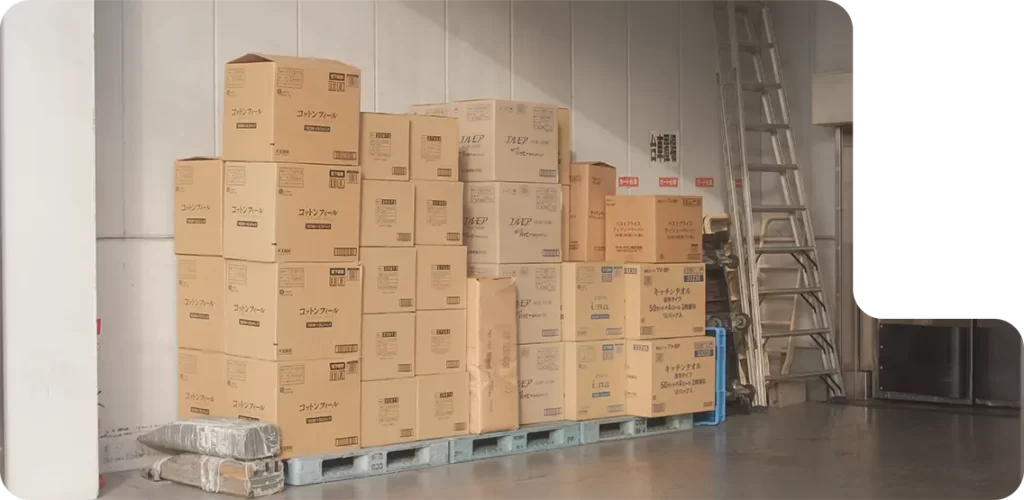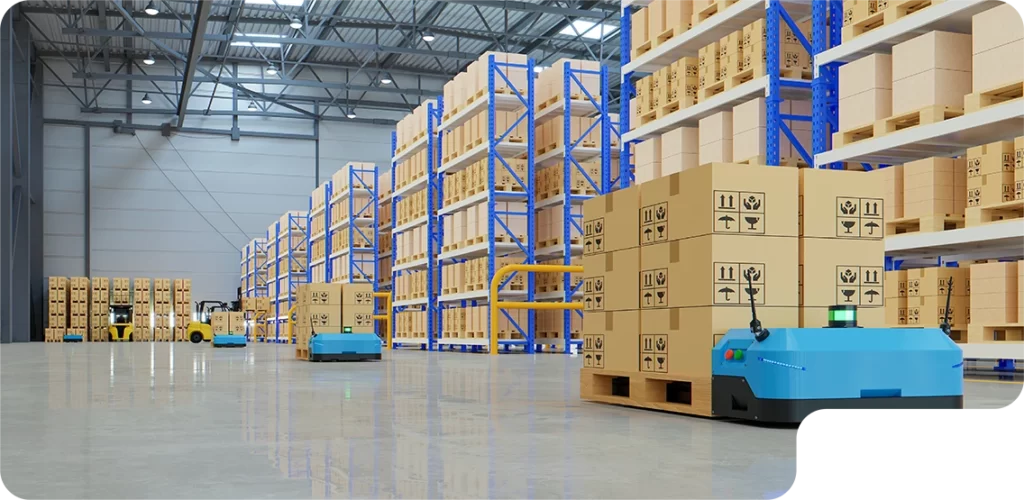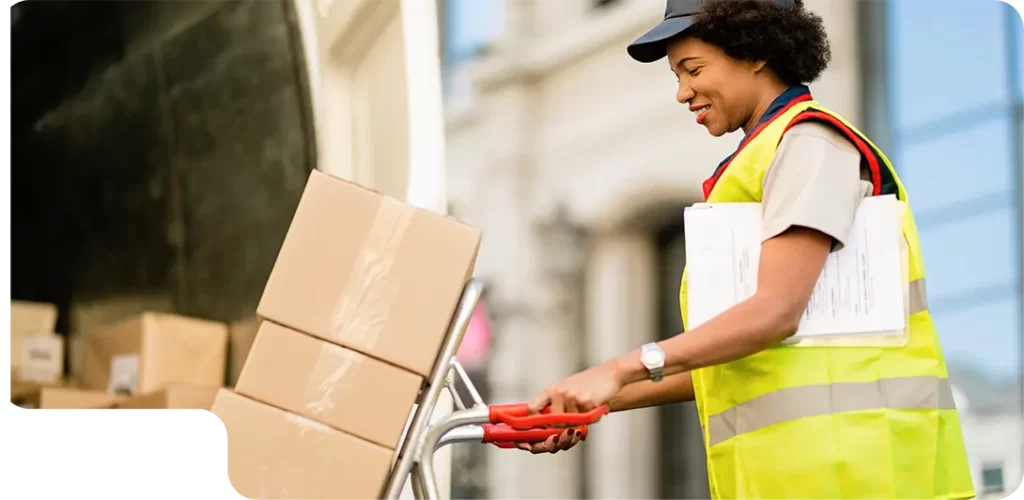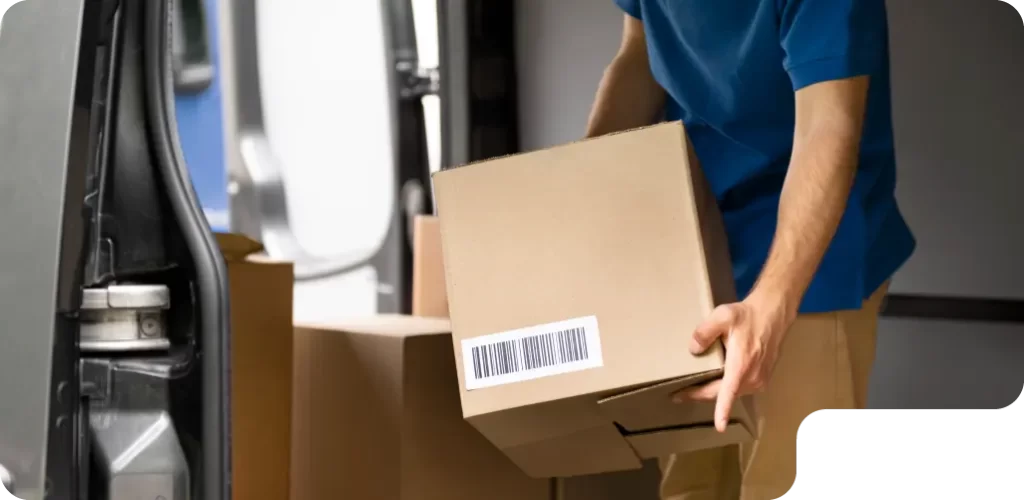Table of Contents
More Fulfillment Content
Get the latest e-commerce industry news, best practices, and product updates!
Table of Contents
More Fulfillment Content
Share This
Get the latest e-commerce industry news, best practices, and product updates!
Table of Contents
Share This
More Fulfillment Content
Get the latest e-commerce industry news, best practices, and product updates!
What is order fulfillment and how can it be optimized to suit your e-commerce business? Learn all the answers in this article curated just for you.
We have all, at some point, made a purchase online. And we can all vouch for the fact that when you receive a well-packed, undamaged product within a day or two of ordering, it brings a lot of joy. But very few of us stop and think about the process behind these deliveries. Whether you are an e-commerce business owner or a frequent customer of these websites, we let you in on the things that go behind these seemingly seamless processes. Then you will see how much hard work and planning goes into making a perfect order.
The process that starts from receiving an order from a customer to the product being delivered to the customer’s doorstep is known as order fulfillment. And it is one of the most important aspects of e-commerce businesses. This article will let you know in detail about the work that goes on behind the scenes and how companies can improve their order fulfillment process.
What is Order Fulfillment?
Order fulfillment is a process that begins when a customer places an order on an e-commerce website and ends when the customer receives the product. The process in between includes picking, packing, labeling, shipping, and delivery. Order fulfillment is not one of the core competencies of running a business. Still, it is the most critical logistics process, and the quality of order fulfillment is doubly crucial.
If a customer is dissatisfied with the order fulfillment process, i.e., late delivery, damaged packaging, etc., they are not likely to buy from that company again. If you are a small e-commerce company trying to scale up and expand your business, remember that your order fulfillment process can impact your customers significantly.

Order Fulfillment Process: How Does it Work?
As we mentioned earlier, fulfillment is a process that has many elements and steps. If you are curious about the process of fulfillment, here is a detailed look into how it’s done.
1. The first step is receiving the order from the customer. The whole process of fulfillment starts as soon as a customer places an order with your business.
2. Inventory storage is an integral part of fulfillment. If you have proper inventory storage and sufficient products in-store, the next steps of the process become relatively smoother.
3. The third and first physical step of the process is called picking. It refers to when the ordered item has been received from the storage where an employee kept it. Selecting the correct product while referring to a picking list is very vital as otherwise, it may cause problems later.
4. Packing is the next step in the operation, and it is imperative. Different types of products need different types of packaging, and it is vital to pick the right kind so that the products do not get damaged while in transit. Some of the packing materials used for this step are boxes, bubble wraps, air fills, and packing tapes. The packages also have to be correctly labeled before they are ready to be shipped.
5. The next step is shipping, and it is pretty self-explanatory. The packed products are shipped through shipping companies to locations close to where the item is supposed to be delivered.
6. The last step is delivery. After the products are shipped to the delivery companies, they send their delivery agents to bring the products to the customers’ desired location.
7. Even though delivery is usually the last step, another one comes up occasionally and is called returns processing. When a customer returns a product, the returning process starts. It is essential to attend to returns correctly and on time.

Why is Order Fulfillment Important?
One of the reasons why many e-commerce businesses fail is incompetent order fulfillment. It might not look like much at first, but it is one of the most important aspects of e-commerce. It is not enough to satisfy customers with your items and the efficiency of your delivery. If the customer receives the products too late or has too many problems with returns, they will eventually stop buying from your business because of this incompetence. If you are an e-commerce business owner, always remember to choose an order fulfillment method that works for your business and satisfies your customers. Customer satisfaction is the number one priority of any business.
Order Fulfillment Challenges
Order fulfillment is a vital process when it comes to e-commerce businesses. So it is very natural that there will be some challenges business owners have to face while fulfilling orders. Order fulfillment is not a singular task; it has many steps that come with their own sets of difficulties. But here are a few of the most common problems retailers can run into in the order fulfillment process.
Inventory Running Out of Stock
Inventory management is one of the critical factors in order fulfillment. If a product is very popular with clients, small businesses might run out of it from time to time. But it is the company’s job to manage the production so this problem doesn’t end up happening often. If people see good products are almost always out of stock, it will result in customer dissatisfaction, and they will eventually stop buying from you altogether. So it is essential to maintain a proper inventory and keep products in stock.
Planning for Demand
Even though it is of utmost importance to keep your inventory from running out, it is also vital that you do not have too many products in your stock. Excess products demand more warehouse space, but they can also get damaged if they are there for too long. And if the popularity of a product drops, it also ends up hurting you economically. It is essential to see the trends and plan for the future, seeing the demand for products.
Damaged Products
Some products are easily susceptible to damage, and they might get damaged while storing or packing. Products and packaging can also get damaged during shipment or delivery, significantly harming your customers’ trust. So businesses need to plan the end-to-end logistics carefully and hire trustworthy order fulfillment partners who will take care of their fulfillment process from the beginning to the end.
International Orders
Not all businesses ship internationally, and there is a reason behind that. It is incredibly time-consuming, but it also takes a lot of money to ship overseas. It is one of the most challenging parts of order fulfillment. You need excellent shipping and delivery partners if you are shipping products internationally.

What are the Types of Order Fulfillment Strategies?
When it comes to order fulfillment strategies, there are a few options you can look at. They are all available for e-commerce businesses and have their pros and cons. Here is a list of order fulfillment strategies for you to choose from.
In-House Fulfillment
As the name suggests, all of the order fulfillment processes happen in-house in this option. This means the company has workers and storage space, and after receiving orders, they pick, pack, label by themselves, and then hire shipment companies to ship and deliver their products to their customers. Even though this process gives the business a lot of freedom to customize their products and packaging for their customers, it can be challenging for small businesses to scale up if they put so much of their resources into the fulfillment process.
Outsourced Fulfillment
This is also one of the most popular methods among e-commerce businesses. Businesses can outsource the fulfillment process to companies that are experts in the matter and provide fulfillment services. 3PL or third-party logistics fulfillment companies are a great way to outsource your fulfillment. This process does stop you from giving your customers a more customized experience. In fact, you get to rely on them for the logistics and fulfillment part of your business and focus more on other core aspects of your business. This process can be cost-effective in the long run and helpful if you want to scale up your business.
Dropshipping
Dropshipping is a method many businesses use when they have a different manufacturer. The product gets packed, shipped, and delivered to the customer directly from the manufacturer in this method. It helps you save inventory costs, and it also saves time. But it can be a costly method and gives you less control over your fulfillment.
Hybrid Fulfillment
As the name suggests, this method is the blend of two or more fulfillment methods. For example, many businesses adopt in-house fulfillment, but during the busiest times of the year, namely the holidays, they ship some of their large products through dropshipping. This method can be pretty effective in times of need.

Order Fulfillment Strategies: Which One to Choose?
It can be hard to choose a specific order fulfillment method as they all come with their pros and cons. It can be relatively easy for small-scale businesses to fulfill orders in-house as they receive fewer orders and ship less frequently. But if a business wants to scale up and do large-scale shipping, it should hire a fulfillment partner like a 3PL company. This way, they will save the human resources and money. They also get access to the expertise of the 3PL company, which will help them in the long run. If a business sells huge products, it should opt for dropshipping. It can be a bit expensive, but it will also save them extra inventory and storage costs.

Order Processing (Picking and Packing)
As we already explained, picking and packing the products are vital to the fulfillment process. This usually occurs in the warehouse or fulfillment center where the inventory is stored. There are people with a list of products they have to retrieve from the storage. That part of the process is called picking.
After they have picked the right products, they are packed. Different products require different packing materials such as boxes, air fills, bubble wraps, plastic, and packing tape. The products are packed meticulously to ensure they do not get damaged while being shipped or delivered. The packages also have to be appropriately labeled before they are ready to ship.
These two processes are fundamental and require a lot of attention. If the wrong product is picked, the customer will return it, and the returns process can be laborious. If it is not packed correctly, the items might get damaged in transit, and the customer will be dissatisfied. That is why it is imperative to pick and pack the orders carefully.
What is Supply Chain Fulfillment?
A lot of people who are not well-accustomed to the world of e-commerce tend to think that the phrases “order fulfillment” and “supply chain” refer to the same process. In simple words, the supply chain refers to the network between a business and all its suppliers that produce, ship, and distribute items to the customers. Order fulfillment is only one part of the supply chain system that includes warehousing, picking, packing, shipping, and delivery of the products.
Even though supply chain fulfillment and order fulfillment refer to the same process, the supply chain is a much larger network system that connects all the logistical processes in a business together. A supply chain includes various resources, information, entities, and people. When a company develops its supply chain, it cuts back on its business costs and stays in front of the competition.
Order Fulfillment Vs. Supply Chain: What are the Differences?
As we mentioned before, a supply chain is a more robust system connecting the business with its final customers. Even though a fundamental logistical process, order fulfillment is only a part of the more extensive supply chain network. A system or path known as the supply chain is from when an item is manufactured to when it reaches the final customer. It includes a lot of different processes, people, organizations, vendors, and much more.
Order fulfillment is a process that begins when a customer orders an item. After the order is placed, the item is picked, packed, shipped, and delivered to the final customer. This process is order fulfillment, which is only part of the much more complicated supply chain system.

Understanding the Supply Chain and Order Fulfillment Process
Order fulfillment is an essential part of supply chain management. The supply chain is a more holistic term that refers to the path that begins when an item is manufactured until it reaches the final customer’s hands and the transaction is successful. Order fulfillment is a logistical aspect of the supply chain that refers to the reception process of an item, and it only begins when a customer orders an item. Then after completing a fulfillment process that takes about 2 to 5 business days, the product is delivered to the customer.
Conclusion
Understanding these two entities is very important for any e-commerce business owner. Understanding these systems and processes will also enable business owners to strengthen their supply chain. They can also grasp which order fulfillment process will be the best for their business and help them stay ahead of their competition.
Sign up today and leave the logistics to us
Sign up and we will get back to you within 24 hours to discuss what services would be best for your business needs. Or speak with us now and tell us what you need.
FAQs
An order fulfillment strategy for any e-commerce business owner is the method they want to adopt to fulfill their customers’ orders.
There are many order fulfillment methods available for e-commerce businesses. They can do in-house fulfillment, outsourced fulfillment, dropshipping, or a mix of these methods.
Order fulfillment is a complex process and has many steps. It starts with receiving the order from a customer, and then the correct product is picked from the inventory. This part is called picking. After that comes packing. All these products are adequately packed and labeled in this step, so they are not damaged in transit. The next step is shipping, which occurs when the product is shipped to a location close to where it should be delivered. After that, the product is delivered to the doorstep of the customers via the delivery person.
Choosing the right fulfillment partner is important. You can always go for a reputed 3PL (third-party logistics) company, and they will handle your fulfillment very well. If you do in-house fulfillment, make sure to choose trustworthy shipping and delivery partners.
When a customer places an order, if they check their order status from time to time, they will be able to see at what stage or fulfillment their product is in. This is called order fulfillment status.
It usually takes 2 to 3 business days to fulfill an order. After that, it may take another day to get delivered. The standard fulfillment time for international orders is much longer. It may take up to a month.